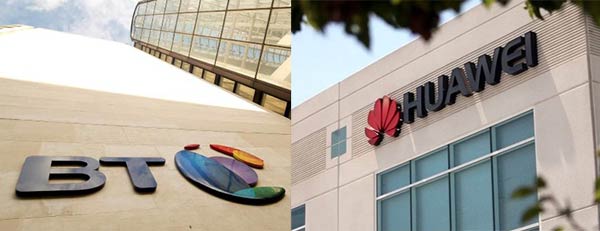BT and Huawei have been beavering away testing the capabilities of fibre connections at BT's research facilities here in the UK. The latest feat, announced by BT, are field trial data speeds of up to three Terabits per second (Tbps). The duo claim that this is the "fastest real-time super channel speeds ever achieved over an existing fibre link". In layman movie downloading terms BT informs us that a 3Tbps connection is capable of "transmitting around 100 HD films in a single second".

Explaining the background to its achievement, BT wrote that the record breaking data transmission took place over a 359Km fibre link between BT's Adastral Park research campus in Suffolk and the BT Tower in London. Further technical details revealed include the use of an advanced ‘Flexgrid’ infrastructure with Huawei’s OSN 9800/8800 and iManager U2000 platform. We are told that the data transfer technique leveraged by BT and Huawei compressed the gaps between transmission channels to carry about 50 per cent more data per fibre compared to typical core network links.
BT concludes that its real-world 3Tbps demonstration shows how it can make even more out of its existing fibre optic infrastructure, reducing the need to put more cables in the ground to cope with bandwidth demand increases. However BT will continue to invest in network infrastructure, this new technology just extends the life of existing cabling. A Huawei representative added that its work with BT is part of its US$4 billion investment in Fixed Broadband (FBB) technology R&D over the next three years.
BT provided a bullet point list of key facts about its collaborative work with Huawei as follows:
BT and Huawei successfully demonstrated a number of world-leading high-speed technical achievements, including:
- A real-time 3Tbps super channel, comprising of 15 x 200Gbps (16-QAM) sub channels, bundled together to provide combined capacity.
- Sub channels separated by as little as 33.5GHz, resulting in record spectral efficiency of 5.97b/s/Hz – an increase of around 50 percent in spectral efficiency compared to conventional 50GHz fixed grid infrastructure.
- A 3Tbps super channel, configured and monitored from a live operational environment: BT’s Transport Network Operations Centre (TNOC) in Cambridge.
- Trials performed using production grade 16-QAM transponders, Flexgrid hardware and management software.
- Spectral width configured in slices of 12.5GHz, up to a total spectral slot of 550GHz.













